Aleksandr Misurkin
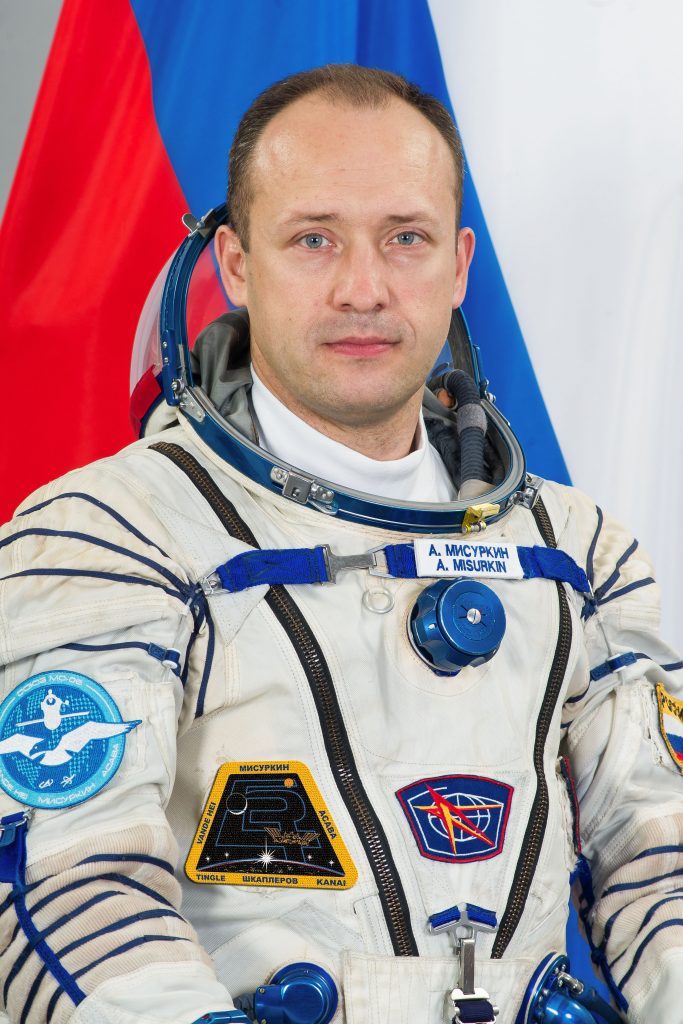
Aleksandr Misurkin is a major in the Russian Air Force and a Cosmonaut with one prior flight to the International Space Station for a total of 166 days in 2013. He will make his return to the orbiting laboratory in 2017 as Commander of the Soyuz MS-06 mission, a Flight Engineer for ISS Expedition 53 and Commander of Expedition 54 for a planned flight duration of five months.
Born September 23rd, 1977, Yershichi, Smolensk Region, Misurkin attended vocational school #1 in Oryol from which he graduated in 1994 and then entered Kacha High Air Force Pilot School (1994-1998) and Armavir Military Aviation Institute (1998/99), receiving his gold medal as pilot-engineer in October 1999. Misurkin served as a pilot, master pilot and commander of the flight section of the guards training aviation regiment at Krasnodar MAI. Over his military career, he logged 1,060 flight hours on the L-39 training aircraft – becoming a 1st class pilot instructor and also working as a parachute instructor and scuba diver.
Aleksandr Misurkin was selected as a Cosmonaut in October 2006 and reported to the Gagarin Cosmonaut Training Center in February 2007 for two years of general spaceflight training and evaluation. As part of his training, he participated in water landing training in the summer of 2008 with Nikolai Tikhonov and NASA’s Cady Coleman. In June 2009, Misurkin concluded general training and was qualified as a Test Cosmonaut, being appointed a position in the Gagarin Cosmonaut Training Center Cosmonaut Detachment. His formal certification as a Cosmonaut of Yu. A. Gagarin CTC came in April 2010 – clearing him for space flight.
Between 2009 and 2011, Misurkin participated in general training related to ISS and Soyuz operations, going through survival training in desert and semi-desert conditions in July 2010 with Sergei Zhukov and Sergei Gerasimenko.
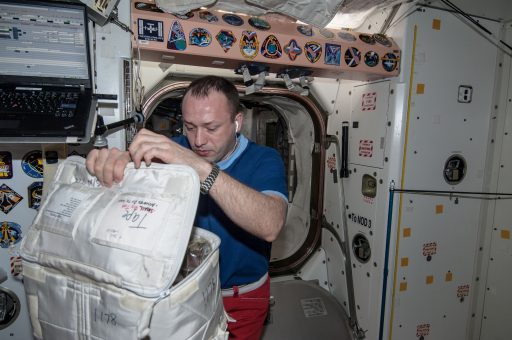
In late 2010, reports emerged that Misurkin had been assigned to the crew of ISS Expedition 35/36 crew with Pavel Vinogradov and Chris Cassidy, also serving as backup crew for Soyuz TMA-06M. His assignment to the prime crew of Soyuz TMA-08M was confirmed in February 2011 and the preliminary crew went through water landing training in August 2011, standing by at the launch of Soyuz TMA-06M in October 2012 as backups.
Vinogradov, Misurkin and Cassidy entered final Soyuz and ISS training exams in March 2013 which were also focused on the new four-orbit rendezvous scheme that was to be first used on a crewed mission by Soyuz TMA-08M. The three crew members passed exams with excellent results and went through their last two weeks of launch preparations at the Baikonur Cosmodrome. Soyuz TMA-08M made a nighttime liftoff on March 28, 2013 and enjoyed a flawless nine-minute ride into orbit atop its Soyuz FG booster followed by an express rendezvous taking just five hours and 45 minutes, to set a new record for the fastest docking with ISS.
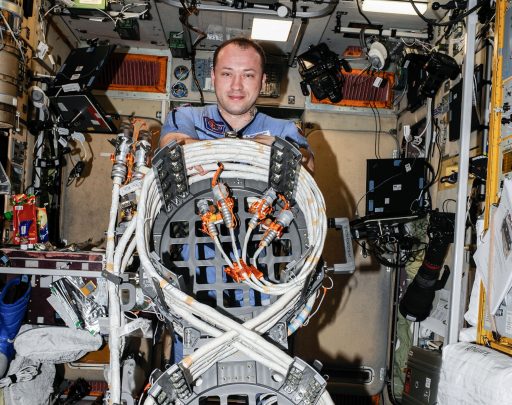
The Soyuz trio joined the Expedition 35 crew of Chris Hadfield, Tom Marshburn and Roman Romanenko for nearly two full months of six-crew operations. In early April, the communications system on the U.S. Segment was revamped with more-capable Integrated Communications Units to provide greater data storage and data rates. Pavel Vinogradov and Roman Romanenko stepped outside on April 20 to install the Obstanovka space plasma experiment, retrieve exposure experiments and replace a laser retroreflector used by approaching spacecraft for navigation.
On April 24, a Soyuz U rocket transported the Progress M-19M cargo spacecraft into space for a two-day rendezvous with the Space Station, but trouble emerged when the craft’s 2ASF-VKA antenna failed to swing into its deployed position. Progress M-19M was able to carry out its far-field rendezvous per the nominal sequence and a software patch masked the missing data from the ASF antenna during the close approach with the crew standing by to take over manual control. No intervention was needed and Progress docked automatically despite being down one antenna.
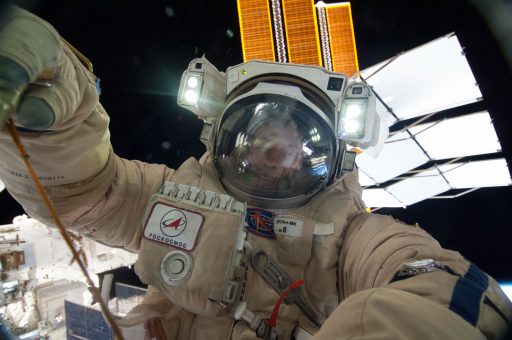
Expedition 35 was in its final days when, on May 9, a large leak emerged on a Pump Flow Control Subassembly on the P6 truss, knocking out part of the Station’s power system because cooling is required to operate the large power-generating solar arrays. Tom Marshburn and Chris Cassidy completed a contingency EVA on May 11 to replace the faulty pump and re-fill the system.
Hadfield, Cassidy and Romanenko made an overnight return to Earth on May 13/14 aboard their Soyuz followed by two-weeks of three-crew operations on ISS before the second half of the Expedition 36 crew arrived – Fyodor Yurchikhin, Karen Nyberg and Luca Parmitano, launching out of Baikonur on May 28 and arriving at ISS less than six hours after liftoff.
Increment 36 was lined up to be one of the most eventful in ISS history to date with a packed visiting vehicle schedule, spacewalks on both segments of the Station and over 100 scientific studies.
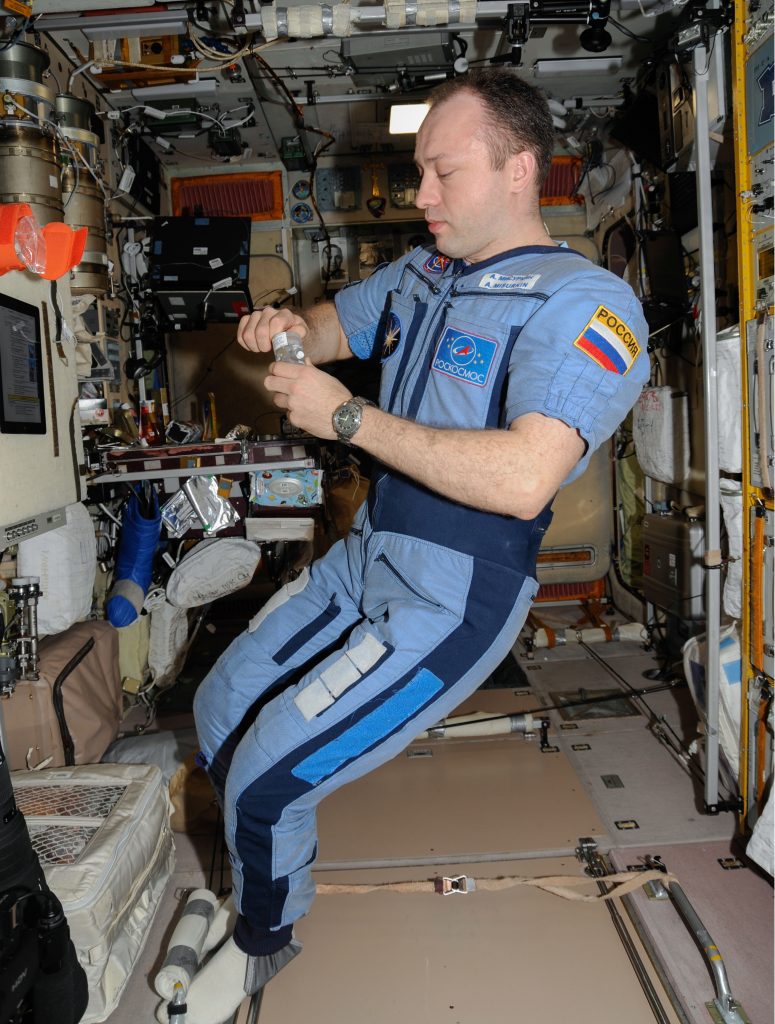
Yurchikhin and Misurkin ventured outside in June to replace a flow control package in the external cooling system of the Russian segment, install external experiments, put in place handrails and prepare for future cable routing work. Another two EVAs by Yurchikhin and Misurkin in August dealt with cable routing on the Russian Segment, the removal of the experimental Laser Communications System, inspection of the KURS docking systems and the preparation of a URM-D workstation ahead of the installation of the UrtheCast cameras on a later EVA.
Expedition 36 welcomed the ATV Albert Einstein, Japan’s fourth H-II Transfer Vehicle and a new Progress freighter to keep up a steady chain of supplies to the orbiting outpost.
Soyuz TMA-08M departed the International Space Station on September 10, 2013 for an overnight return to Earth landing in Kazakhstan in the morning hours of September 11 to close out a mission of 166 days, 6 hours and 15 minutes. On his first mission to space, Aleksandr Misurkin raked up 20 hours and two minutes of spacewalking time on three EVAs.
Having returned from his first space flight, Misurkin went through the typical post-mission routine to collect data for various studies looking at the effects of the space flight environment. He then re-entered flight training, not expecting to wait too long for his second flight assignment.
Aleksandr Misurkin was assigned to the prime crew of Expedition 51/52 together with Nikolai Tikhonov and Mark Vande Hei. They entered flight-specific training at the Gagarin Cosmonaut Training Center in July 2015 and went through winter survival training in a forest outside Moscow to prepare for the unlikely event of an off-target landing in winter conditions.
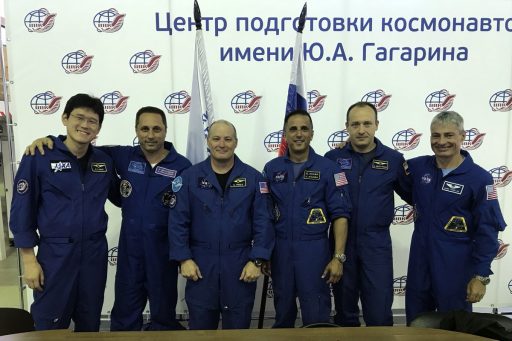
The crew was in place for the launch of Soyuz MS-02 as backups and expected to fly on the MS-04 mission, however, there were considerable changes to the 2016/17 ISS crews due to Russia’s decision to cut its permanent staff on ISS to only two Cosmonauts. As a result, crews were shuffled and Tikhonov lost his flight assignment. Misurkin and Vande Hei were switched to Soyuz MS-06 and NASA veteran Joe Acaba was called up on relatively short notice to join them as the USOS crew complement is stepped up to four.
Misurkin and Vande Hei were again standing by at the Baikonur Cosmodrome in July 2017 as backup crew for Soyuz MS-05 along with Norishige Kanai who will fly on MS-07. They then entered a final month of Soyuz and ISS training with Joe Acaba to be ready for a mid-September liftoff on a mission that is expected to be five months in duration, slightly shortened due to an upset to the regular Soyuz schedule caused by technical problems earlier in 2017.
Aleksandr Misurkin is married to Olga Anatolievna Misurkina, they have two children. His hobbies include badminton, basketball, downhill skiing and carting.
